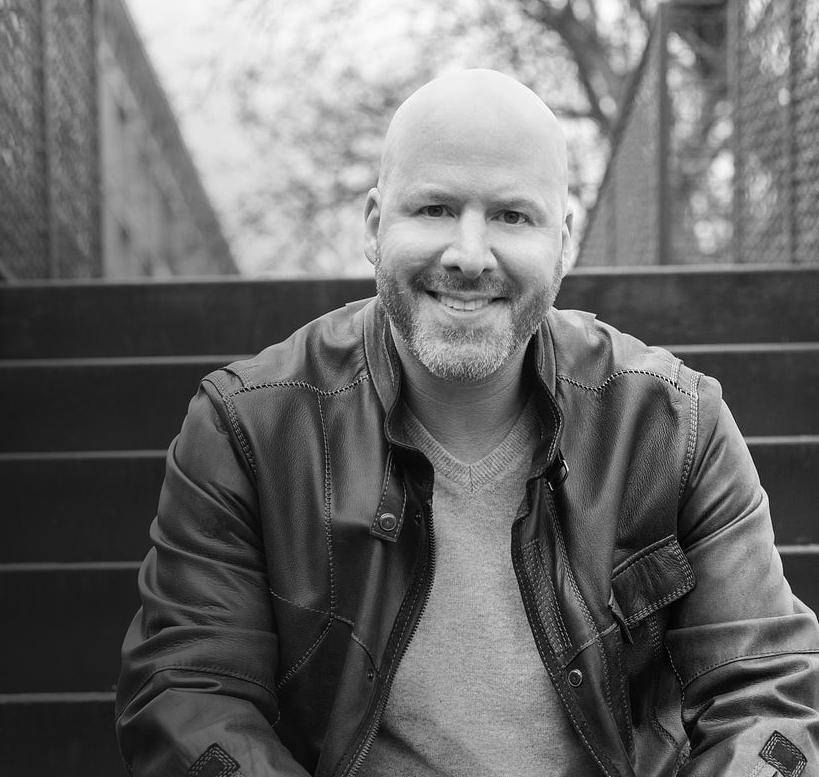

Personal Excellence presented by HR.com June 2023 1 Submit Your Articles 12 08 17 24 Maximize Your Day: Follow These Principles To Get More Done - Dave Pygon, Pygon ONE Consulting Unlocking The Key To Success Through Delayed Gratification - Jim Stovall, Narrative Television Network Please Step Forward If You Are An Ambivert - Thom Dennis, Serenity in Leadership JUNE 2023 • Vol. 28 • No. 06 (ISSN 2564-1948) Do Constraints Cripple Your Team Or Ignite Their Creativity? - Gary Harpst, LeadFirst WHEN OVERPLAYED STRENGTHS BECOME WEAKNESSES IN THE WORKPLACE - Paul Bramson, CEO, The Paul Bramson Companies


Articles 10 Four Signs That It May Be Time To Ban Your Meetings And why that might not be necessary - Grayson James, Coach and Author, Full Contact Performance 15 Tackling Mental Health With Financial Wellness Nurturing employee well-being - Einat Steklov, Founder, Kashable and Coral Capital Solutions 19 Navigating Uncertainty: Applying Lessons From The Pandemic Tips for creating a better workplace culture - Cyndi Wenninghof, Employee Success Director, Quantum Workplace 27 How To Build Resilience Instead Of Chasing Zero Errors Strategies for high-reliability work teams - Jake Mazulewicz, Speaker and Advisor on Human Performance When Overplayed Strengths Become Weaknesses In The Workplace How to avoid this - Paul Bramson, CEO, The Paul Bramson Companies 06 On the Cover INDEX Personal Excellence JUNE 2023 Vol.28 No.06 (ISSN 2564-1948)
Maximize
Your Day
: Follow
These Principles To Get More Done


Unleashing the power of Win the 16
- Dave Pygon, Founder and President, Pygon ONE Consulting
Do Constraints Cripple
Your Team Or Ignite Their Creativity?
Tips for creating a constraints-busting culture
- Gary Harpst, CEO, LeadFirst
Unlocking The Key To Success Through Delayed Gratification
Enjoy the present and prepare for the future
- Jim Stovall, President, Narrative Television Network
Please Step Forward If You Are An
Ambivert
What can businesses do to nurture the talents of all personality types?

- Thom Dennis, CEO, Serenity in Leadership

INDEX Top Picks 08 12 17 24
Editorial Purpose
Our mission is to promote personal and professional development based on constructive values, sound ethics, and timeless principles.
Excellence Publications
Debbie McGrath CEO, HR.com - Publisher
Sue Kelley Director (Product, Marketing, and Research)

Babitha Balakrishnan and Deepa Damodaran Excellence Publications Managers and Editors
Personal Excellence Team
Babitha Balakrishnan Editor
Chinnavel Design and Layout (Digital Magazine)
Chandra Shekar Magazine (Online Version)
Submissions & Correspondence
Please send any correspondence, articles, letters to the editor, and requests to reprint, republish, or excerpt articles to ePubEditors@hr.com
Debbie Mcgrath Publisher, HR.com
Babitha Balakrishnan Editor, Personal Excellence

Nurturing Personal Growth: The Path to Achieving Excellence
Personalgrowth and excellence are intertwined journeys that require ongoing self-reflection, learning, and adaptability. Successfully navigating this path of personal development with purpose is essential to attaining greater success.
In the pursuit of excellence, it is important to strike a balance between leveraging our exceptional qualities and preventing them from becoming detrimental. While determination, focus, loyalty, and confidence are often associated with effective leaders, overplaying these strengths can hinder our performance and limit our growth. Self-awareness becomes crucial in identifying these tendencies, and seeking feedback from trusted advisors helps us gain valuable insights for improvement.
fuels innovation and unlocks untapped potential.
Another aspect of personal growth lies in understanding and appreciating the diversity of personality types. The concept of ambiversion, encompassing both introverted and extroverted traits, has gained recognition in various roles and leadership positions. By creating equal opportunities for all personality types to contribute, businesses nurture effective communication, creativity, and productivity within their teams.
To delve deeper into these topics and discover more insights on personal excellence, read the June edition of Personal Excellence.
For customer service, or information on products and services, call 1-877-472-6648 Personal
For
Constraints, whether they stem from limited resources or challenging circumstances, can either impede progress or ignite innovation. Adopting a mindset that views constraints as catalysts for creativity can transform obstacles into opportunities. Embracing constraints with a growth mindset
We hope that you will gain new insights and ideas by reading all the articles in this edition, and we would appreciate it if you could share your valuable feedback and suggestions with us.
Happy Reading!
Disclaimer: The views, information, or opinions expressed in the Excellence ePublications are solely those of the authors and do not necessarily represent those of HR.com and its employees. Under no circumstances shall HR.com or its partners or affiliates be responsible or liable for any indirect or incidental damages arising out of these opinions and content.
EDITOR’S NOTE
OR
Advertising Opportunities, email: sales@hr.com Copyright © 2023 HR.com. No part of this publication may be reproduced or transmitted in any form without written permission from the publisher. Quotations must be credited.
is published monthly by
Limited,
Excellence (ISSN 2564-1948)
HR.com
56 Malone Road, Jacksons Point, Ontario L0E 1L0 Internet Address: www.hr.com
Subscribe now for $99 / year And get this magazine delivered to your inbox every month Become a Member Today to get it FREE! SIGN UP Write to the Editor at ePubEditors@hr.com
In a world of unparalleled challenges (global pandemic, racial injustice, political rivalry, digital 4.0, emotional malaise), uncertainty reigns. Finding opportunity in this context requires harnessing uncertainty and harnessing starts with reliable, valid, timely, and useful information. The Excellence publications are a superb source of such information. The authors provide insights with impact that will guide thought and action.

Excellence publications are my ‘go-to’ resource for contemporary and actionable information to improve leadership, engagement, results, and retention. Each edition offers rich and diverse perspectives for improving the employee experience and the workplace in general.


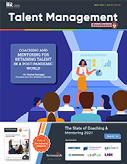
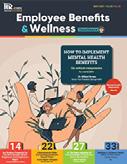



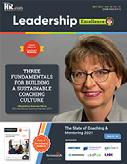
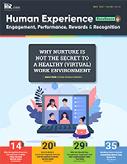
I regularly read and contribute to Leadership Excellence and Talent Management Excellence. I use many of the articles I read to augment my own presentations and I often share the articles with my clients. They are always quick, right on target for the latest issues in my field, and appreciated by my clients. If you want to stay up to date on the latest HR trends, choose a few of the different issues from the Excellence series of publications.

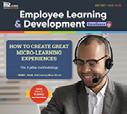
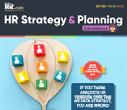
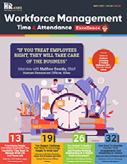
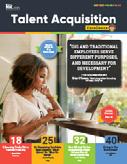
 Dave Ulrich
Rensis Likert Professor, Ross School of Business, University of Michigan Partner, The RBL Group
Julie Winkle Giulioni Author, Virtual /Live Keynote Presenter, Inc.’s Top 100 Leadership Speakers
Dr. Beverly Kaye CEO, BevKaye&Co.
Dave Ulrich
Rensis Likert Professor, Ross School of Business, University of Michigan Partner, The RBL Group
Julie Winkle Giulioni Author, Virtual /Live Keynote Presenter, Inc.’s Top 100 Leadership Speakers
Dr. Beverly Kaye CEO, BevKaye&Co.
WHY EXCELLENCE PUBLICATIONS?
We’re eager to hear your feedback on our magazines. Let us know your thoughts at ePubEditors@hr.com
When Overplayed Strengths Become Weaknesses In The Workplace
How to avoid this
By Paul Bramson, The Paul Bramson Companies
Agood leader or professional is often characterized by the exceptional skills they possess, such as unwavering determination, laser focus, steadfast loyalty, and unyielding confidence. These qualities help the person move forward, accomplish amazing things, and leave a lasting impact — a legacy.
However, there is a fine line between strengths that propel you forward and those that hold you back. Decades ago, leadership training focused on strengths and how to use them to get what you wanted, such as moving up and becoming a manager, or getting your employees to do what you want, for example.
Becoming an effective leader is much more complex than that. It’s about understanding who you are to then understand those around you.
Overplayed Strengths
Leadership development often has people dividing their strengths and weaknesses without taking into account strengths that can become detrimental to the work environment and their brand. For example, being confident and assertive is often a great attribute in a professional and leader, but when you’re too confident, you come across as arrogant or unrelenting.
Another great quality is loyalty, which leaders regularly look for in their people. It shows they understand the brand and that they are willing to do anything for the company, but this is where loyalty becomes a weakness: blind loyalty. Blind loyalty prevents individuals from recognizing when something isn’t working because it supposedly benefits the brand. It also drives out other great professionals and potential leaders.
When taking a strength to the extreme, it hinders performance— being a little too focused can make you lose track of other projects around you. If you’re too smart or knowledgeable in a particular subject, you may become reluctant to learn anything new, but if you are too nice, people are more likely to ‘walk all over you’.
As a leader, it’s crucial to understand your strengths and weaknesses. After all, the hallmark of a great leader is understanding when to shift and tone down your strengths—situational awareness.
Listening and Understanding
Self-awareness is a crucial element in recognizing when you are overplaying your strengths as a leader, which is when having a confidant or advisor can
Personal Excellence presented by HR.com June 2023 6 Submit Your Articles
COVER ARTICLE
further help you improve your leadership skills. While it’s easy for people to recognize other people’s overplayed strengths, it’s not always as easy to self-reflect on these circumstances.
Having a confidant allows you to hear from someone else what they see as your overplayed strengths and how to overcome them. For example, if you’re too nice, you can still set boundaries; if you’re humorous, you can still bring levity without being crass. However, it’s important that you trust this confidant genuinely “sees” you and will provide you with valuable, actionable feedback.
A confidant must be someone who has no stake in your professional endeavors, meaning they can’t be part of your immediate work environment. While having a board of advisors — people that worry and care about your brand — is key to any successful organization, a personal confidant must be willing to have difficult conversations about you and with you.
Once you have feedback from your advisor or others around you, having the self-awareness to pivot from your overplayed strength is the next — and most difficult — step. Self-awareness is one of the most important elements of emotional intelligence and the one that will yield the most results in coaching others.


The notion that one’s weaknesses are simply weaknesses is archaic. Vulnerabilities can coexist with strengths and actually empower your strengths for you to be a better leader. Acknowledging and addressing weaknesses is not a sign of weakness itself, but rather proof of humility and a commitment to personal and professional growth. By recognizing your overplayed strengths and admitting that you need to work on them, you can harness the power of that strength while mitigating the potential pitfalls within them.
The journey of leaders and professionals is a tightrope walk between strengths and weaknesses, and it’s about having the necessary self-awareness to pivot. What was once a formidable attribute can quickly become a liability if not managed effectively. By creating and engaging with a confidant or ‘board of advisors’ and maintaining self-awareness, leaders and professionals can navigate this treacherous path with greater confidence and success.
Paul Bramson is a dynamic and highly sought-after thought leader in the areas of communication, leadership, sales, interviewing, and negotiation as a keynote speaking and professional training global powerhouse. He has over 25 years of experience empowering professionals, leaders, and teams at all levels with highly relevant knowledge and skills. As CEO of The Paul Bramson Companies, he has transformed leaders and inspired audiences of Fortune 500/1000/5000 companies. Paul maximizes these powerful messages with his unique ability to pivot to all industries and audiences with his authenticity, vast experience, and tremendous passion for the messages he delivers, creating an entertaining and unforgettable experience.
Would you like to comment?
Personal Excellence presented by HR.com June 2023 7 Submit Your Articles When Overplayed Strengths Become Weaknesses In The Workplace
Maximize Your Day: Follow These Principles To Get More Done
Unleashing the power of Win the 16
By Dave Pygon, Pygon ONE Consulting
Win the 16 is a philosophy, mindset, and lifestyle that can help us navigate the tough, complex, and competitive world we live in. While the principles and strategies may not be groundbreaking, they can be complex and not always easy to implement. However, by taking small steps and repeating them every day, we can create habits that improve our lives. These steps can be applied to our careers, health, and relationships, and can serve as a crutch when motivation is lacking. Ultimately, Win the 16 is a recipe for success that can help us optimize and conquer every waking hour of the day.
Win the 16 is defined as the following:
Each day, we are given sixteen waking hours to conquer. Win the 16 means taking full advantage of those hours. It means embracing discipline and making choices to achieve victories, no matter how small, throughout the day. Winning is a habit, and successes early in the day can cascade further successes. Challenges and unforeseen moments are sure to happen, but winning the sixteen means course correcting and adjusting our mindset to optimize the moment, be our best selves and finish the day proud.
These principles will assist us in optimizing our day
● Early successes in your Day
● Mindset
● Habits and Discipline
● Time Management
● Accountability and Healthy Lifestyle
Starting your day with success is crucial as it can act as momentum for accomplishing more tasks. With days passing by sooner than you expect, the majority of your day may end up being spent on the priorities assigned to you by others. To achieve early success, you must perform a task that gives

Personal Excellence presented by HR.com June 2023 8 Submit Your Articles
Top Pick
you a sense of gratification and fulfillment. This goal could be something small but significant that has the potential to lead to bigger accomplishments. A few examples could be exercising, taking a walk, having a glass of water, meditating, completing an important task, or making sure not to open your emails until you’ve accomplished two priorities in your day. The key is to focus on your goals with consistency and integrity every morning so that they generate positive energy.
Controlling our mindset is within our capabilities, but it certainly isn’t always easy. At any given moment, we have the power to choose the type of mindset we want to have. I recommend people try to internalize a growth and positive mindset, each of which could help them optimize their daily performance. With a growth mindset, they should develop an insatiable appetite for learning and thrive towards achieving more than they did yesterday. In today’s fast-paced world, learning is imperative. A positive mindset is crucial to approaching each day with enthusiasm and handling the inevitable challenges that emerge. Incorporating a positive perspective can make all the difference by enabling individuals to approach their day, handle setbacks, and challenges, and ultimately make significant strides to optimize their day.
Motivation is an incredible feeling! I wish I had it every minute of my sixteen waking hours. Unfortunately, we are not always motivated. This is why habits and discipline are imperative to optimizing our day. When motivation is absent, we all need to rely on our habits and discipline to ensure we are maximizing our time. Creating habits that will help us achieve our goals, priorities, and tasks for that day will ensure we accomplish what we authentically desire. Eliminating bad habits, and creating good habits is not easy. This takes discipline. It’s critical to our daily success. Just remember to stay focused on the goal, which is to optimize the day. Your rewards will arrive but potentially not as quickly as you might like. You have to trust the process and believe.
In today’s world, time is of the essence, and we all wish we had more of it. The first step in managing our time properly is to “own it.” This implies that we recognize our control over our time. While it’s true
that we have obligations that we must fulfill, we still have the power to decide how to allocate our time efficiently. Recognizing this power inspires us to plan and execute the goals we must accomplish for the day effectively. This could mean re-framing certain relationships which take up a lot of our time, eliminating irrelevant items from our to-do list, practicing saying no to certain people and requests to smooth the path towards our goals, and staying focused on the desired outcome of each day. By remaining focused and valuing our time, we could increase our productivity and accomplish more each day while still taking good care of ourselves.
Additional principles to winning the 16 are being accountable for our actions and nonactions, taking ownership of our day, and maintaining a healthy lifestyle to optimize our mind and body. Even when we have tough days, we need to readjust and attack tomorrow. A healthy mind and body can afford us the aptitude and energy we need to optimize our day. Winning the 16 is a choice that requires small steps taken consistently over time.
Dave Pygon is a champion for leadership and individual development so people can explore their unlimited potential to become their best selves. He is the founder and president of Pygon ONE Consulting, and an author of Win the 16: Principles and Strategies to Optimize your Day. Dave has over two decades of leadership experience. He is a certified business coach, behavioral consultant, master life coach, and time management expert.
Would you like to comment?

Personal Excellence presented by HR.com June 2023 9 Submit Your Articles
Maximize Your Day: Follow These Principles To Get More Done
Four Signs That It May Be Time To Ban Your Meetings
And why that might not be necessary
By Grayson James, Grayson James Consultants, LLC
Shopify began its meeting ban experiment this past January. Since then, I’ve gotten many questions from clients and others, including HR leaders, about whether they should jump on the “meetings bandwagon.” Here’s how I see it:
You should absolutely stop wasting your people’s valuable time with useless meetings. But eliminating meetings may not always be the way to go.
There are four primary reasons for having most meetings, and if your sessions are not addressing any of these, it may be time for a change. Here are the four reasons:
1. To learn and expand what you see, think, and understand
This happens when people share (and listen well) what they’re each seeing and how they’re interpreting things. Every person and team has blind spots, and it’s impossible to navigate the complexities and challenges of today’s business environment alone, no matter how smart, perceptive, or experienced any team member may be. If you want to perform well together, you’ve got to get good at learning together.
2. To make important decisions and design or solve significant problems
Not all decisions are equally important, and even important ones don’t all impact everybody equally.
Same with problems. Some decisions can be made without a meeting and don’t need everybody’s full engagement to implement. And some issues can be declared or solved without convening everybody on the team. Making decisions and solving problems together can remind team members and others about what’s important to pay attention to, how to think about things, and what to commit to. You can ask yourself, is gaining an extra 30-60 minutes a week by not meeting worth losing this clarity? Sometimes it may be worth it, and sometimes not.
3. To make and manage the promises that deliver value to customers (and to everyone in the organization who makes that happen). These promises—and how they’re managed—drive execution and clear accountability in a team.
These reasons reflect the three main types of conversations—Learning Conversations, Design Conversations, and Fulfillment Conversations that are central to outstanding collaborative performance in organizations. When your meetings include one or more of these three conversations, and the conversations are managed well, then folks will almost always leave the meetings more grounded, energized, and better prepared to perform well than they arrived.
Personal Excellence presented by HR.com June 2023 10 Submit Your Articles
4) This reason for the meeting is also critical: It’s to keep the team or group connected and engaged with each other and with their collective vision and mission. Though no less important than the other three reasons, if your meetings are well-designed and the conversations well-managed, this will also be addressed.
Before deciding to perform last rites on a recurring meeting, ask yourself if this meeting delivers the goods: Are people really learning and expanding their thinking? Are important decisions being made and good problems being raised and addressed? Are valuable promises being made and managed in ways that fulfill the mission of the team and organization?
If not, you can conduct your own experiment by discontinuing the meeting and seeing what happens: If people are happier and performance doesn’t suffer, then the meeting may have just been a vestige of a bygone era, and you could be better off without it.
If you feel something important has been lost, however, consider upgrading your meetings instead of ending them. You can start by clarifying their purpose, ensuring that only necessary attendees are invited, and then get help to step up your meeting design and conversational facilitation skills.

Banning specific meetings could be the right thing for your team and organization. But many other meetings can be transformed—from an energysapping, necessary evil to valuable and enlivening encounters that people look forward to because they help them to do their best work.
Resources:
● Book: Full Contact Performance: The Internal Art of Organizational Collaboration By Grayson James, with a foreword by Dr. Marshall Goldsmith John Hunt Publishing (Business Books imprint). To be released August, 2023. Available for pre-order at: Amazon, Barnes & Noble, and Indiebooks
● Article: Shopify deleted 322,000 hours of meetings. Should the rest of us be jealous?
● Blog Post: Trash your meeting agenda (and have a good conversation)
Grayson James is a certified ontological coach and author of Full Contact Performance: The Internal Art of Organizational Collaboration.
Would you like to comment?

Personal Excellence presented by HR.com June 2023 11 Submit Your Articles
Four Signs That It May Be Time To Ban Your Meetings
Do Constraints Cripple Your Team Or Ignite Their Creativity?
Tips for creating a constraints-busting culture
By Gary Harpst, LeadFirst
Inbusiness, as in all areas of life, it’s so easy to think, I don’t have enough! Whether we’re trying to launch a new product, move into a new market, or just meet the next quarter’s revenue goal, it’s so easy to feel helplessly crippled by a shortage of resources—time, talent, expertise, customers, and, of course, money. When we come from a place of scarcity, there’s always a reason we can’t do it. Not only does this mindset hold us back from what could be a huge victory, but it also creates a company full of victim thinkers.
Instead of being motivated by challenges, employees get in the habit of giving up way too soon. They get
fixated on what they lack, not what they have, and it paralyzes them. They start blaming circumstances for their failures. This attitude compounds over time, and the whole culture gets bogged down in negativity and defeatism. That’s when the spark of innovation flickers and dies.
It doesn’t have to be this way. In fact, constraints can energize you and unlock your creativity when approached with the right mindset. Ironically (or perhaps not), one of his greatest business victories happened early in his career when his team was faced with what seemed an impossible task: build a next-generation Windows product in a shockingly short amount of time.

Personal Excellence presented by HR.com June 2023 12 Submit Your Articles
Top Pick
We had a tiny team of six people and very few resources. Really, we needed at least 30 people to do this job. Other teams of more than 100 people were working toward the same objective. But the fact that we faced such ‘ridiculous’ constraints forced us to get super-creative. We focused on finding existing components and assembled a system out of pre-built pieces. Ultimately, we launched our new product two years ahead of almost all our competitors.
The lesson? When we respond to constraints by getting super-engaged and focused, it unleashes incredible innovative power and allows us to beat almost insurmountable odds. How can you get your team into this mindset? Here are a few tips for creating a culture of overcoming constraints:
Get Out of the Victim Mentality Yourself by Changing Your Language
Our first instinct is often to see ourselves as victims of circumstance, says Harpst. Do you ever find yourself saying: “We don’t have _________. Of course, we can’t do that!” OR “Look at what they have! No wonder they were so successful!”? That’s your victim mentality keeping you from finding creative ways
to make it work. Here’s the problem: Your mindset bleeds down into the rest of the team.
“You can’t always change your circumstances, but you can always change your mindset,” notes Harpst. “Stop making victim statements. Instead of saying, ‘We can’t,’ start asking, ‘What can we do with what we have?’ Also, when team members make these kinds of statements, remind them that there is always a solution.”
Build Momentum by Focusing on What You CAN Do First
There will always be a million things you can’t do. Instead of hand-wringing over the constraints, find three or four things that you CAN do right now and execute them. These quick wins will generate some early momentum. This is critical to getting employees engaged and excited about the goal and helping them see that success is possible.
When You Hit a Roadblock, Regroup and Rethink
The “obvious” solution might not be possible for you. If we had all the time and money in the world, we’d

Personal Excellence presented by HR.com June 2023 13 Submit Your Articles Do Constraints Cripple Your Team Or Ignite Their Creativity?
all just do the first thing we thought of. Constraints force us to really get creative and problem-solve. Realize that just because there is no immediately clear solution doesn’t mean that there’s NO solution at all. Call a brainstorming session and get people focused on creative problem-solving.

We had a client who served the construction market and decided to face a recession in a very different way. Rather than cut staff and expenses, they analyzed their business and realized a large percentage of their profits came from a few of their products. They narrowed their product offering and allocated more cash and resources to high-value activity. As a result, over the next three years, they increased sales by 50 percent. By facing the constraints of a recession, they figured out a better way to do business that may not have occurred to them otherwise.”
Break Down the Problem and Look at it from All Angles
Banish all assumptions and start with a “beginner’s” mindset. Are there new (cheaper, faster, more effective) ways to do it? Are there alternative programs, materials, vendors, processes, etc. that you’ve never considered? Have things changed and you’ve gotten too complacent to move with the times? What unspoken rules are you following? Are you letting personal biases rule out possible solutions? Is there something you’re doing now that you could stop doing to free up time, capital, or resources? Is there someone in your company whose gifts are not being leveraged—someone who might have the insight and expertise to break the problem wide open?
This can be a real exercise in humility. It’s not easy to assume you don’t know, and it’s certainly not easy to step out of your comfort zone. But when you get rid of all assumptions and start fresh, you can have amazing breakthroughs.
Build Resiliency in Your Team
There’s often a “one step forward, two steps back” rhythm to innovation, which means your team is going to need some staying power. Here’s the thing: Resiliency doesn’t “just happen”; it is
cultivated. Make sure people feel safe enough to speak up without fear. Keep them connected to the larger mission. And instill a sense of optimism by celebrating small wins and reminding them. We’ve overcome constraints before, and we can do it again. Most of all, show them you love and care for them.
Strange as it may sound, great leaders truly love their employees. Great teammates love each other. I always say love is the bonding force that holds teams together. It’s also what allows teams to get knocked down and get back up again.
Bottom line: There will always be constraints. If there weren’t, we’d never know what we’re capable of doing.
We’ve all heard the adage that necessity is the mother of invention. It’s true. If we always had an easy solution at hand, we’d never push boundaries and take leaps of faith and leave comfort zones behind. Constraints are the gifts that force us to grow.
Gary Harpst is the author of Built to Beat Chaos: Biblical Wisdom for Leading Yourself and Others. He is the founder and CEO of LeadFirst Having been a CEO for 40 years, Gary has experienced the challenges of every aspect of business ownership, from start-up to rapid growth to acquiring other companies to being acquired. (Solomon Software, which he co-founded, was purchased by Great Plains and ultimately sold to Microsoft.) He is a keynote speaker, writer, and teacher whose areas of focus include leadership, business, and the integration of faith at work.
Would you like to comment?
Personal Excellence presented by HR.com June 2023 14 Submit Your Articles
Do Constraints Cripple Your Team Or Ignite Their Creativity?
Tackling Mental Health With Financial Wellness

Nurturing employee well-being
By Einat Steklov, Kashable
Today’s workers are facing immense levels of stress. The American Psychological Association (APA) has found that 27% of American adults report feeling so stressed they often cannot function. It was also noted that two-thirds of those surveyed who were employed indicated that their job was a stressor.
Mental and physical health are important components of overall health. In the same way that a broken leg can vastly affect an employee’s ability to work, stress and other mental health conditions can be the cause of anything from poor productivity to full-on burnout.
How Employers Can Help
A 2021 survey by the APA reported that a large majority of employees believe certain actions from their employers would help their mental health. These can begin with simple, everyday actions like staying aware of the personal well-being of employees to understand when they are struggling. Employers can also identify and adjust, where possible, factors that are making it difficult for employees to work – by switching around schedules or reassigning specific tasks.
Personal Excellence presented by HR.com June 2023 15 Submit Your Articles
Additionally, there are a number of coping and resiliency resources available that employers can provide to their staff. These range from counseling programs to all-important financial wellness resources.
Improving Financial Well-Being
Financial wellness can have positive effects on mental well-being. Gaining financial knowledge and security can lead to better opportunities to enjoy life and plan for the future.
However, for many people, this kind of security is still a dream. Currently, nearly two-thirds of Americans are living paycheck-to-paycheck, and almost half struggle to cover a $400 emergency expense. With so many workers one payroll disruption away from disaster, there has never been such a pressing need for workers to be provided access to tools that can help them improve their financial standing.
This may include tools that can help people to create effective financial plans for both short-term goals, such as reducing expenses or establishing an emergency fund, and long-term goals like sending their kids to college or paying off a mortgage. But according to a study by CNBC+, over half of adults in the United States are not financially literate, meaning they’ve never had access to the right tools or knowledge to budget or invest.
While many employee benefits packages include perks like 401(k) matching or health insurance that can help create some level of financial security, employers should also be aiming to provide financial wellness tools. These include low-cost loans, credit monitoring, financial coaching, and easy saving options, as well as educational materials that can improve financial literacy.
Holding Onto Staff
Because of the large percentage of Americans with a need for financial wellness tools, workplaces that offer financial wellness benefits to their employees can set themselves apart from the competition. And with people looking for jobs that better align with their values and seeking equality and inclusion,
employers should be taking any opportunity they have to both attract and retain talent.

Some employers believe that the financial cost would be too prohibitive to add financial wellness benefits for their employees. Nevertheless, many of these tools are available without additional expenses for the employer, meaning they can offer all employees access to low-cost credit, financial safety nets, and smart alternatives to credit cards and cash advances.
American workers are living under an incredible amount of pressure, and the effects this has on their personal and work lives are tangible. Last year, the majority of the 550 million lost working days in the United States from absenteeism were stress-related, and twenty percent of last-minute no-shows are directly caused by job stress. That’s billions of dollars in lost wages, profit, and productivity that may have been avoided if employers offered their employees more comprehensive mental health support.
Employers have a unique opportunity to support their employees through financial wellness offerings. Offering financial wellness tools, including low-cost loans, financial coaching, credit monitoring, savings accounts, and educational resources, can have a positive effect on employees’ mental health and overall well-being. As the workforce continues to change, employers who prioritize the mental health and financial wellness of their staff will set themselves apart and begin creating a more productive and loyal workforce.
Would you like to comment?
Personal Excellence presented by HR.com June 2023 16 Submit Your Articles Tackling Mental Health With Financial Wellness
Einat Steklov is the Founder of Kashable and Coral Capital Solutions.
Unlocking The Key To Success Through Delayed Gratification

Enjoy the present and prepare for the future
By Jim Stovall, Narrative Television Network
Oneof the most important tools that you and I have in our quest for success in our personal and professional lives is delayed gratification. In the field of behavioral science, some of the most significant research in this area has come to be known as the Stanford Marshmallow Test conducted in 1972. Researchers conducted a simple experiment with preschool children. Individual children were
ushered into a small room with a table and a chair. A researcher asked each child to be seated and then placed one marshmallow in front of them. The researcher explained, “You can eat that one marshmallow right now or wait 15 minutes, and I will come back and give you a second marshmallow, so you will have two marshmallows to eat.”
Personal Excellence presented by HR.com June 2023 17 Submit Your Articles
Top Pick
The children’s reaction on that day and the researchers’ compiled data following these children throughout adolescence and well into their adult years provided a glaring conclusion. People who will delay gratification, whether it’s eating marshmallows, saving money, following a diet and exercise regime, or forging a professional and personal life, are much more likely to succeed.
However, as in applying most wisdom to our daily lives, it’s not quite as simple as it first appears. Life is not a single photograph. It is a full-length motion picture, and we’ve got to live every day of it successfully. We cannot simply deprive ourselves of everything we want and need today in hopes that the future will be better.
Recently, at the Stovall Center for Entrepreneurship at Oral Roberts University, we completed our annual Launch Competition in which students create their own businesses from the idea stage to making them a reality. Individual ventures are judged by investment bankers, venture capitalists, and entrepreneurs. The winners are awarded significant cash prizes.
One of the winning teams asked me how they should utilize their winnings. I told them I thought about 30% should go to subsidize current operations and about 60% should be used for future capital expenditures.
When one of the students pointed out they would have 10% left over, I explained that money should be used for them to have fun and enjoy the fruit of their labors.
As in most endeavors, the elusive quest for balance and moderation holds our key to success.

As you go through your day today, enjoy the present and prepare for the future.
Jim Stovall is the President of the Emmy-award-winning Narrative Television Network as well as a published author of more than 50 books—eight of which have been turned into movies. He is also a highly sought-after platform speaker.
Would you like to comment?

Personal Excellence presented by HR.com June 2023 18 Submit Your Articles
Unlocking The Key To Success Through Delayed Gratification
Navigating Uncertainty: Applying Lessons From The Pandemic
Tips for creating a better workplace culture
By Cyndi Wenninghof, Quantum Workplace
● Once again, HR leaders find themselves in uncertain times. As we navigate organizational changes or still deal with The Great Resignation, we should reflect on what we learned from the pandemic and apply it to today.
● We came out of the pandemic as experts in employee engagement because we aimed our culture at engaging employees.
● There are three things we did during the pandemic that will help us navigate uncertainty: build trust, increase flexibility, and listen to employees.
The past several years have been a roller coaster ride of changes in the workplace. Just when we think things have settled down, there’s something new on the horizon. Once again, we find ourselves in those “uncertain”
times, with some companies facing organizational changes.
Work has changed, changing workplace culture with it. But one thing is constant. The best organizations concentrate on creating an environment where employees can be successful. Leaders need to build an engaging experience, inspire performance, and create a magnetic culture that attracts the best and keeps the best.
To create a workplace where employees thrive—and want to be—HR leaders need to take a look at the progress made during the pandemic. What did HR do differently? They honed in on employee success. Where do you start? Something we’re very familiar with. Engagement.
We’re Experts in Engagement
2020 brought some dark times. A lot of unknowns. A lot of change. But it wasn’t all gloom.
We learned a lot about engaging employees during a time when engagement was expected to drastically drop. But leaders kept that from happening.
How?
● We coached managers to be open and flexible with parents teaching their children.
● We normalized the barking dog interruption on video calls.
● We connected people in a remote world with learning and virtual social interactions.
● We thought creatively about benefits and perks.
● We increased the transparency and frequency of internal communication.
● We kept the momentum of DEI efforts.
● We emphasized simply being human.
Personal Excellence presented by HR.com June 2023 19 Submit Your Articles
It was a great time for engagement. But now, we’re going back to what we “know,” mainly because it worked for us before.
It’s cliché at this point to say the workplace has changed. We need to use what we’ve learned and build on it as we navigate today’s employee experience. We need to aim our culture-building strategies at engagement.

Building Trust
If there’s one aspect that needs to be in every work culture, it’s trust. Trust is essential to establishing and maintaining relationships. Research shows employees who trust their employer are 50% less likely to be looking for another job. Whether an organization finds themselves in a tight labor market or facing downsizing, organizations need to make strides to keep top talent.
During the pandemic, we trusted our employees to get work done from home. We also added communication touchpoints to mimic leadership’s open-door policy and emphasize transparency. Trust was built on a two-way street.
The good news is, we still have our employees’ trust. The 2023 Edelman Trust Barometer indicated employees trust people at their organization more than leaders from other entities. As an organization, we need to work to maintain and build on the trust we created. How? Transparency in communication and putting trust in your employees.
Just like you did during the pandemic, make sure you are communicating clearly and frequently. Make sure the organization is using employee communication channels to keep employees in tune with the
organization. Admit unknowns. Explain the why behind decisions. Even if the conversation is unpleasant, you should have it. Acknowledge the conversation is uncomfortable.
Transparency in communication helps employees understand the whys and not draw their own conclusions. This increases the trust employees have in the organization.
But remember, trust must be built in both directions. Trusting employees to get work done and showing faith in their abilities and decision-making on behalf of the organization go a long way. Trust that they have the best interests of the company at heart, and you will be rewarded.
Increasing Flexibility
Research shows 75% of leaders think they’re being flexible. Only 57% of employees agree.
Personal Excellence presented by HR.com June 2023 20 Submit Your Articles
Navigating Uncertainty: Applying Lessons From The Pandemic
Immediately when someone says flexibility, you likely think about remote and hybrid work. While that might be the case in some instances, we all know that every job can’t be done from home. That doesn’t mean you can’t still be flexible.
During the pandemic, we understood that you might have to step away to help solve a math problem. It was nothing to throw in a load of laundry in between meetings. Employees labeled “essential” saw flexibility in other ways. Maybe it was flexibility in schedule, work duties, or having more input in how work was done. We were all juggling. We were all human. We extended a little more compassion and generosity to everyone. Organizations need to get back to that mindset.
Research shows that employees describe ideal work cultures as flexible, inclusive, supportive, collaborative, and caring. To shape culture, leaders should evolve performance to be flexible and engaging. Allow employees to be creative in achieving their goals. Consider alternative shifts. Center decisions about how work gets done around the employee. Encourage managers to make decisions that are best for their department.
Sure. Flexibility includes considering options for when and where work gets done. But it’s more than that. It’s understanding we all have a role to play in the organization and can do our best work when we’re given the tools
and opportunity to be successful. Employee success helps us achieve business success.
Emphasizing Employee Listening
Improving the employee experience means listening to employee needs. It means creating a culture of feedback where we are listening to what is going on and then acting to make meaningful changes. Listening should give you the information you need so you’re not acting on a hunch.
A lot was unknown during the pandemic. We lost the in-person communication to be able to discover what was going on. So, we asked. We asked employees how they were feeling. We asked employees what they needed. We asked employees how their employer could assist.
And it worked! Half of the organizations saw improvement in employee engagement, with 18% saying they didn’t see a dip in engagement. Through our reliable employee listening strategies, we were able to create an engaging work experience and deliver the flexible, inclusive, supportive, collaborative, and caring culture employees were craving. Leaders shouldn’t only take this approach when the situation is dire. It should be an everyday practice.
We can measure culture through our tried and tested engagement metrics. We can show employees they matter when we listen to
their opinions, connect the dots to determine what is going on in the organization and make the workplace better.
As HR leaders, we’ve said over and over that work has changed and it won’t be returning to the “normal” we once knew. That means we can’t return to the same cultural strategies and expect success. We’ve navigated uncertain times before successfully. We have the playbook to do it again.
By going back to building trust with employees, creating a flexible environment, and relying on our employee listening strategy, we can create a better workplace culture that employees want to be a part of.
Cyndi Wenninghoff is the Employee Success Director at Quantum Workplace. At Quantum Workplace, she oversees the Employee Success area which is responsible for employee engagement, recruiting, DE&I, onboarding, and retention efforts.
Would you like to comment?

Personal Excellence presented by HR.com June 2023 21 Submit Your Articles
Navigating Uncertainty: Applying Lessons From The Pandemic
HRCI® & SHRM® CERTIFICATION PREP COURSES
GROUP RATES AVAILABLE
For HR Professionals
Show that management values the importance of the HR function, and has a commitment to development and improvement of HR staff.
Ensure that each person in your HR department has a standard and consistent understanding of policies, procedures, and regulations.
Place your HR team in a certification program as a rewarding team building achievement.
For Your Organization
Certified HR professionals help companies avoid risk by understanding compliance, laws, and regulations to properly manage your workforce.
HR Professionals lead employee engagement and development programs saving the company money through lower turnover and greater productivity and engagement.
A skilled HR professional can track important KPIs for the organization to make a major impact on strategic decisions and objectives, including: succession planning, staffing, and forecasting.
HR.com/prepcourse CALL TODAY TO FIND OUT MORE 1.877.472.6648 ext. 3 | sales@hr.com
1 Less expensive than a masters or PhD program, and very manageable to prepare with
2. legislation and best practices
3. Recognized, Industry benchmark, held by 500,000+ HR Professionals
Group Rate Options
We offer group rates for teams of 5+ or more for our regularly scheduled PHR/SPHR/ SHRM or aPHR courses.
For groups of 12+, we can design a more customized experience that meets your overall length of the course.
Groups rates for HRCI exams are also available as an add-on.
All group purchases come with 1 year of HR Prime membership for each attendee to gain the tools and updates needed to stay informed and compliant

CALL TODAY TO FIND OUT MORE 1.877.472.6648 ext. 3 | sales@hr.com | HR.com/prepcourse
1 2 3
Please Step Forward If You Are An Ambivert
What can businesses do to nurture the talents of all personality types?
By Thom Dennis, Serenity in Leadership
Wouldyou know an ambivert if you met one? If you are someone who possesses both introverted and extroverted traits, and your behavior can naturally shift depending on the environment you are in, then you might be the ideal candidate for just about any role and a future leader in the making. But does that mean we should all aspire to be one and is this a skill set that anyone can master?
There are various tests and assessments that measure introversion and extroversion. Perhaps surprisingly, a YouGov study revealed that 50% of Britons say they are introverted, with 9% saying they are ‘very introverted’ and more British men than women (53% vs 48%) describing themselves as introverts. The term ‘Ambivert’ is a relatively recent concept in psychometric testing and personality psychology and while it is gaining popularity in everyday language and in self-help literature, it is not yet widely accepted or recognized within the scientific community. There is currently no universally accepted definition of ambiversion or a standard measurement tool, so it is difficult to ascertain the exact number of ambiverts amongst us. We can also all exhibit different levels of introverted and extroverted tendencies, making it challenging to categorize.
Ambiverts vs Introverts vs Extroverts at Work?
Traditionally, personality traits have been measured on a continuum between introversion and extroversion, with individuals falling somewhere along this
spectrum. Ambiverts can easily adapt to different situations, enjoy a mix of being outgoing and in their own company, know when to listen and when to talk, can adapt to use different methods of communication, and often show flexibility in their actions. Oprah Winfrey, Barack Obama and Mahatma Gandhi are believed to be or have been ambiverts.
Introverts often learn through observation, have good listening skills and reflect before making decisions and think before they act. They are often innovative partners and attentive listeners with excellent attention to detail. They tend to feel energized after spending time alone and enjoy intimate conversations rather than large events. Bill Gates, Malala Yousafzai, Mark Zuckerburg, Emma Watson and Eleanor Roosevelt are high-profile introverts.
Extroverts typically feel energized after socializing and tend to quickly make decisions, take risks for success, have strong communication skills and build relationships easily. They are confident, charismatic, bring energy to work, are organized and enjoy collaborating and taking charge. Winston Churchill, Arianna Huffington, Tony Blair, Whitney Wolfe Herd and Richard Branson are well-known extroverts.
What is the Ambivert Advantage?
Ambiverts can be highly successful in a variety of settings, including sales, leadership, and negotiation.
Professor of Psychology Adam Grant at the University of Pennsylvania studied The Ambivert Advantage. In his research, he found that ambiverts can be
Personal Excellence presented by HR.com June 2023 24 Submit Your Articles
Top Pick
extremely productive and effective in the workplace because they possess both introverted and extroverted qualities.
Grant says: “Ambiverts achieve greater sales productivity than extroverts or introverts do because they naturally engage in a flexible pattern of talking and listening. Ambiverts are likely to express sufficient assertiveness and enthusiasm to persuade and close a sale but are more inclined to listen to customers’ interests and less vulnerable to appearing too excited or overconfident.”
Grant also challenged notions of extroverts being more successful and productive revealing that in a sales environment, the worst performers were the workers who were either extremely introverted or extremely extroverted.
Grant developed The Ambiversion Scale as a self-report measure of ambiversion. It consists of 14 items that assess an individual’s preferences for socializing, including statements such as “I like to mix with
people, but also need time to myself” and “I’m equally comfortable in quiet and loud environments.”
We can develop our ambivert skills through conscious practice and goal setting, and learning from both introvert and extrovert role models, but it is important not to get worn down by trying to be a Jack (or Jill) of all trades and to be in flow. You can work on developing your social skills, confidence, and assertiveness to become more extroverted, whilst also creating the space to take time to recharge and reflect as an introvert would. Being aware of your tendencies and making a conscious effort to balance your social and work interactions can also help.
The Pandemic Effect
The pandemic may have helped ambiverts to shine in the workplace as that period of time required leaders to call upon the strengths of both extroversion and introversion. For example, bosses needed to listen and take feedback in order to provide flexible and empathetic work environments for staff, but they also needed to show clear and demonstrative enthusiasm to rally and guide the team through the unknown.

Personal Excellence presented by HR.com June 2023 25 Submit Your Articles
Please Step Forward If You Are An Ambivert
What Can Businesses Do to Nurture the Talents of All Personality Types?

Ensure a diverse team of introverts, extroverts and ambiverts to benefit from good interpersonal communication, creativity, emotional intelligence and productivity.
Check your bias – In the same way, schools celebrate children who volunteer to read out loud and take on the main roles in a school play, win the running races, or perform in the school band, employers often celebrate people who speak up the most in meetings and put themselves forward. While these types of extroverted skills greatly benefit business, so do introverted traits. Do not assume that quieter staff members have no interest in taking on leadership responsibility. Ensure everyone has an equal opportunity to lead and collaborate.
Embrace CQ – It enables us to understand the decisions that are made in a business and how our decisions are influenced by attitudes and beliefs.

Analyze how you reward – Pay attention to what tasks and rewards feel meaningful to your employees. Consider the different ways you can reward and acknowledge their work, from a private word in-person, to email and public recognition.
Understand the importance of visibility – Visibility is not necessarily a sign of productivity or engagement. Ensure the business culture aims to bring the best out of all its employees. Check-in with people and ask about their preferred communication style and build trust that you are interested in what all employees have to say.
Do not rely on team meetings for communication – In large group meetings, introverts can be less visible if they are not as talkative as their extrovert team members. Not everyone thrives in big meetings – some people prefer to catch up one-to-one or in a smaller group or need more time to prepare and not to be put on the spot. Instead, invite shyer members of staff to share their input in a couple of days, either vocally or via email if that suits them better. Their ideas may be the deal breaker in finding a solution or creative result.
Create an inclusive, positive culture – Prioritize building a positive, employee-centric culture that gives people the space to work in a way that suits them.
With an MSc in Change Agent Skills & Strategies, skills as an NLP Master Practitioner, 17 years of experience as an officer in the Royal Marines, and having worked extensively around the world, Thom Dennis brings all his experience together as a facilitator, speaker, consultant, educator and change agent as CEO of Serenity in Leadership. For the last 30 years, his career has been dedicated to facilitating transformation through organizational change. Would you like to comment?
Personal Excellence presented by HR.com June 2023 26 Submit Your Articles
Please Step Forward If You Are An Ambivert
How To Build Resilience Instead Of Chasing Zero Errors
Strategies for high-reliability work teams
 By Jake Mazulewicz, Ph.D. JMA Human Reliability Strategies
By Jake Mazulewicz, Ph.D. JMA Human Reliability Strategies
Wildland firefighters. Air traffic controllers. Flight deck crews of Navy aircraft carriers. Operators of nuclear power plants and the national bulk electric grid. These are among the safest and most reliable work teams in the world. And they don’t try to eliminate all errors and surprises.
Decades of experience have shown that the crusade to eliminate every error is both impractical and
unwise. So, what do high-reliability work teams do instead? They operate so that errors and surprises don’t disable them. Instead of being brittle or fragile, these teams seek to build Resilience.
In the past 30 years, researchers have discovered a few unusual traits that High Reliability Organizations (HROs) share. For example, HROs tend to trust the workers with the most expertise, not the most status.
Personal Excellence presented by HR.com June 2023 27 Submit Your Articles
HROs also tend to respect the complex, often sticky Ground Truth of how work actually gets done, instead of trying to oversimplify and “proceduralize” everything. And of course, HROs seek to build resilience.
Many of the articles and books on High Reliability Organizations (HROs) were written by academics -and perhaps even for academics. The result? There is a lot of confusion on how to turn HRO theory into real-world practice. Many modern front-line teams in electric power utilities, gas & oil, renewable energy, maritime shipping, and other high-hazard industries are still looking for concrete, practical ways to build resilience into their everyday work.
There is no one recipe to follow. There is no single playbook or procedure that guarantees success. That’s why some people now speak of HRO as High-Reliability Organizing – a verb, not a noun. Yet nearly all reliability-seeking teams use several classic, time-tested strategies. Here are three of them.

1) Watch for Weak Signals
Mark leads a team of five electric utility lineworkers. They install, repair, and maintain the 250,000-volt power lines on 150-foot tall metal towers. Mark’s
team is widely respected for being consistently safe and efficient. But they often get criticized for talking too much while working. It’s true. They chat and banter through most of the workday. Some team leaders hate this. But Mark actively supports it. Why? Because long before his operators get indecisive, confused, stressed, or in trouble, Mark hears subtle changes in their usually playful banter.
Mark realized this “Weak Signal” was a clever early warning system. Over time, he identified more of these Weak Signals and learned how and when to best respond to each one. Mark’s team is more resilient than most others partly because he resolves potential problems, surprises, and errors long before most other team leaders even notice them.
What’s one Weak Signal in your line of work that took you a long time to learn, and that helps you catch errors or problems early, while they’re still relatively easy to address? What are the best Weak Signals that 3-5 of your most trusted peers use? How could you train the apprentices in your team to recognize and act on these Weak Signals earlier in their careers than you did?
Personal Excellence presented by HR.com June 2023 28 Submit Your Articles How To Build Resilience Instead Of Chasing Zero Errors
2) Embed Fail Safes
How can we ensure that a carpenter doesn’t accidentally put their finger into the razor-sharp, spinning blade of a table saw? The answer is simple. We can’t.
Trying to eliminate all errors or “proceduralize” everything in most current jobs is impossible. So, the world’s most high-reliability teams take a different approach. They adjust their systems not to prevent all failures, but to help them fail safely, then recover quickly, easily, and cheaply.

Many modern table saws include a clever safety system. The spinning blade actually senses electrical conductivity. If it senses a highly conductive material like your finger, it slams the spinning blade to a full stop within a few thousandths of a second. It doesn’t prevent the error. It prevents that error from disabling you. The result? Instead of a severed finger and a lifetime of regret, you get a small nick and a lesson you will never forget.
What’s one common, serious error that people often make in your line of work? If it’s impractical to eliminate that error, then how could you become more resilient to it? What kind of Fail Safe would allow you and your peers to make that error with minimal consequences, learn from it, and recover from it quickly, easily and cheaply?
3) Practice Uncertainty
After WWII, a European general commented that Americans are so good at war because war is chaos, and nobody practices chaos on a daily basis like the Americans.
High-reliability teams train and practice regularly. But they don’t just practice the “right” procedures for everyday tasks. They practice chaos or at least uncertainty. For example, a pilot climbs into a flight simulator without knowing that her simulated plane will soon be struck by lightning. A nurse gives a mock medication to an advanced life-like mannequin that has been secretly programmed to simulate a heart attack without any warning. Pilots and nurses handle their respective surprises. Afterward, they debrief with their peers and learn without blame.
Does your team practice responding to unexpected errors, emergencies, or other surprises in a safe way?
If not, then start with a few simple, even fun experiences like interactive, discussion-based case studies. Pick an incident relevant to your work that happened 1-3 years ago. Tell your team how the job started, but don’t reveal the error or surprise yet. Ask them, “What are some risks you sense here and how would you handle them?” After the discussion peaks, then reveal “what happened” in the incident and discuss what surprised them, how they would respond, and why. Debrief together to share insights, lessons learned, and good practices on how to respond to uncertainty with resilience.
For decades, High-Reliability Organizations (HROs) have used these and similar methods to build resilience instead of chasing the illusion of an error-free workplace. What kind of results could they generate for your team?
Jake Mazulewicz, Ph.D. shows leaders in high-hazard industries why errors are signals, not failures, and how to address the deeper problem so that everyone can work more reliably and safely. He keynotes and advises globally. He has a decade of experience in Safety for electric utilities and served as a firefighter, an EMT and a military paratrooper.
Would you like to comment?
Personal Excellence presented by HR.com June 2023 29 Submit Your Articles
How To Build Resilience Instead Of Chasing Zero Errors
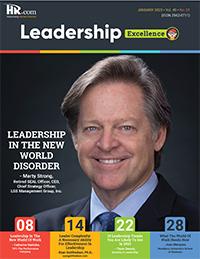
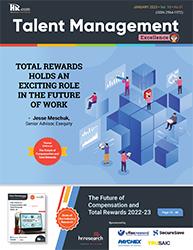
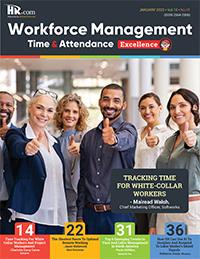

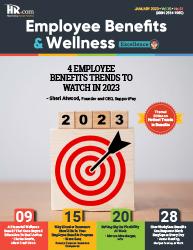
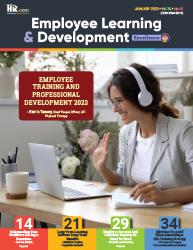
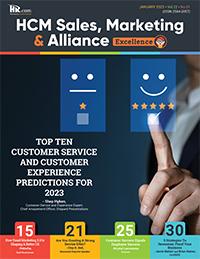
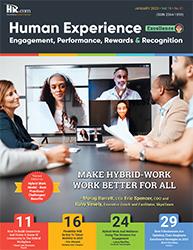

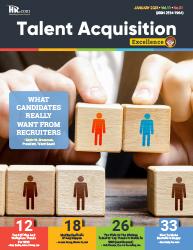
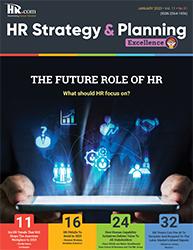
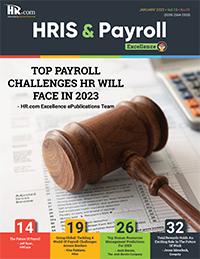
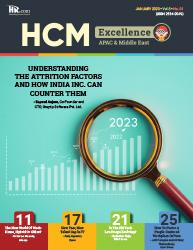
Like to submit an article? Use our online submission form or for more information go to www.hr.com/ExcellencePublications Publications 13 Targeted Publications to Reach Your Audience Informing, Educating, Enlightening and Assisting HR professionals in their personal and professional development, the Excellence series offers high-quality content through the publications!

























 Dave Ulrich
Rensis Likert Professor, Ross School of Business, University of Michigan Partner, The RBL Group
Julie Winkle Giulioni Author, Virtual /Live Keynote Presenter, Inc.’s Top 100 Leadership Speakers
Dr. Beverly Kaye CEO, BevKaye&Co.
Dave Ulrich
Rensis Likert Professor, Ross School of Business, University of Michigan Partner, The RBL Group
Julie Winkle Giulioni Author, Virtual /Live Keynote Presenter, Inc.’s Top 100 Leadership Speakers
Dr. Beverly Kaye CEO, BevKaye&Co.





















 By Jake Mazulewicz, Ph.D. JMA Human Reliability Strategies
By Jake Mazulewicz, Ph.D. JMA Human Reliability Strategies














